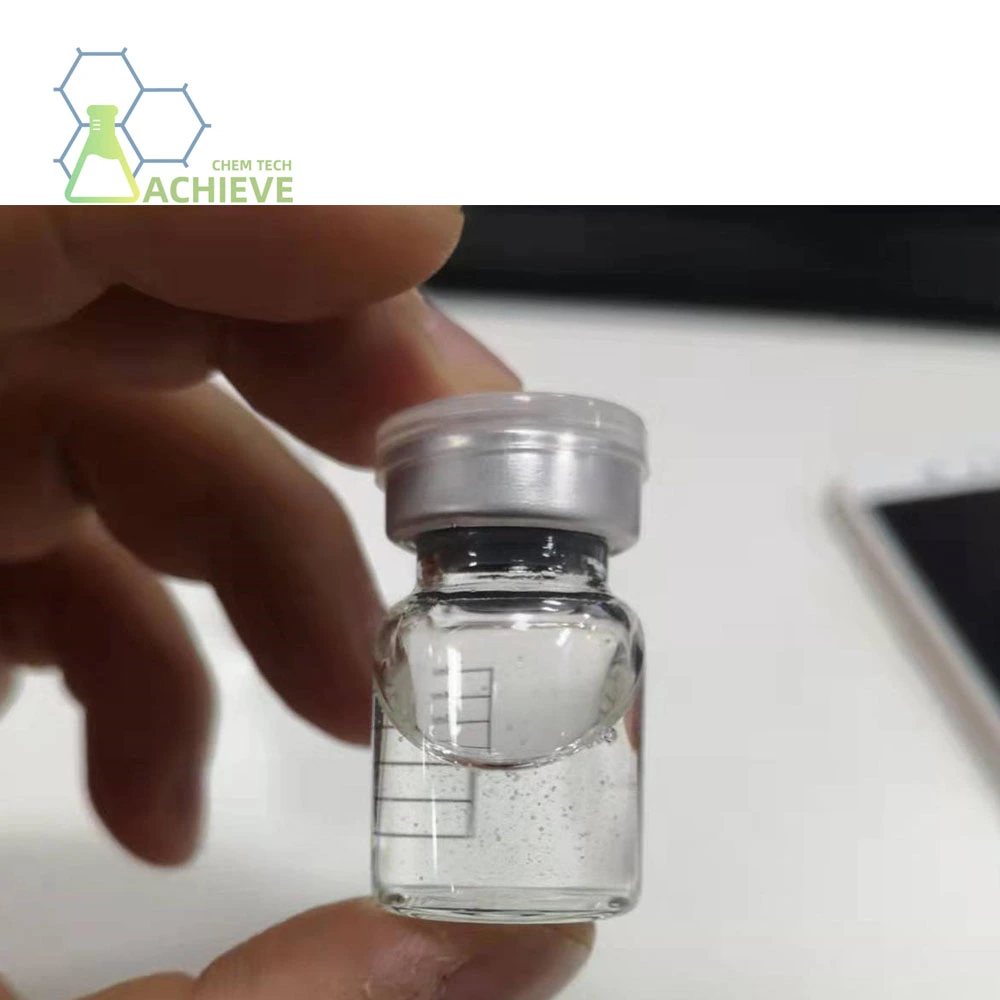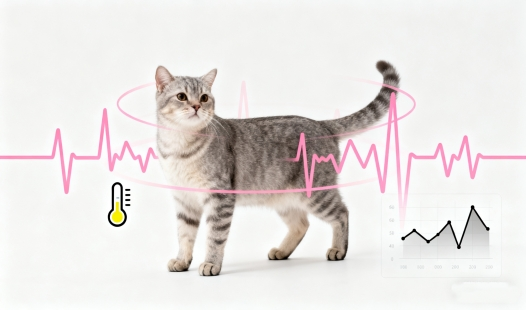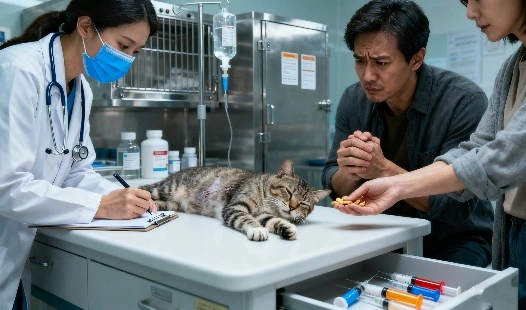What to do if GS-441524 treatment seems ineffective?
Systematic Approach to Assessing Apparent GS-441524 Treatment Failure
- Systematic Approach to Assessing Apparent GS-441524 Treatment Failure
- Investigating Potential Causes for Suboptimal Response to GS-441524 Therapy
- Diagnostic Modalities for Re-evaluating FIP Status During GS-441524 Treatment
- Therapeutic Alternatives and Adjuncts When GS-441524 Response is Inadequate
- FAQ
- GS-441524 Supply: Trust BLOOM TECH for Quality and Reliability
- References
A new GS-441524 fip shows promise as a way to treat feline infectious peritonitis (FIP), giving cat owners and vets hope. There are times, though, when the treatment might not work, which worries both pet owners and veterinary experts. This detailed guide talks about what to do when GS-441524 drug treatment doesn't seem to be working, which can help you handle tough FIP situations.


Systematic Approach to Assessing Apparent GS-441524 Treatment Failure
When faced with a seemingly ineffective GS-441524 treatment, it's crucial to adopt a systematic approach to evaluate the situation. This methodical assessment helps identify potential issues and guides decision-making for further interventions.
Review Treatment Protocol and Adherence
The first step in assessing GS-441524 treatment efficacy is to review the prescribed protocol and ensure strict adherence. Factors to consider include:
- Dosage accuracy: Ensure that the correct dosage is being administered based on the cat’s weight and condition. Any deviation from the prescribed dosage can impact the treatment's effectiveness.
- Administration frequency: Verify that the medication is being given at the correct intervals as specified in the treatment plan. Skipping doses or administering them too far apart may compromise the outcome.
- Duration of treatment: Confirm that the treatment is being continued for the recommended duration. Premature discontinuation or extended treatment without guidance can both affect results.
- Proper storage and handling of the medication: Check that the medication is stored properly, as improper storage conditions (e.g., exposure to heat or light) can degrade its effectiveness, leading to suboptimal results.
Any deviations from the recommended protocol may contribute to suboptimal results. Consult with the prescribing veterinarian to verify that the treatment regimen aligns with current best practices for fip treatment.
Monitor Clinical Signs and Biomarkers
Closely monitor the cat's clinical signs and relevant biomarkers throughout the treatment course. Key indicators to track include:
- Body weight: Regularly check the cat's weight, as significant fluctuations can signal improvement or worsening of the disease. A steady weight gain generally indicates a positive response to treatment.
- Temperature: Monitor the cat’s body temperature to detect any fever or signs of infection. A persistent fever could indicate that the treatment is not fully effective or that complications are arising.
- Appetite and activity levels: Track changes in appetite and energy levels. A decrease in appetite or activity could suggest that the treatment is not working as expected or that the cat is experiencing side effects.
- Specific symptoms related to the cat's FIP presentation (e.g., effusion in wet FIP): For wet FIP, monitoring symptoms such as abdominal or pleural effusion is crucial. The resolution or worsening of effusions can indicate how well the treatment is managing the infection.
- Complete blood count (CBC) and serum biochemistry profiles: Regular blood tests can provide insights into the cat's overall health and how the body is responding to treatment. Significant changes in the CBC or biochemistry profiles may suggest adverse effects or complications from the FIP or treatment.
Regularly assess these parameters to identify trends and potential areas of concern. Persistent abnormalities or lack of improvement may signal the need for treatment adjustments or further investigation.
Investigating Potential Causes for Suboptimal Response to GS-441524 Therapy
When GS-441524 drug treatment doesn't yield the expected results, several factors may be at play. A thorough investigation can help pinpoint the underlying causes and guide appropriate interventions.
Misdiagnosis or Concurrent Conditions
In some cases, an apparent lack of response to GS-441524 may be due to a misdiagnosis of FIP or the presence of concurrent conditions. Consider the following:
- Re-evaluate the initial FIP diagnosis, especially in cases with atypical presentations
- Investigate potential co-infections or underlying health issues that may complicate treatment
- Conduct additional diagnostic tests to rule out other diseases with similar clinical signs
Collaborating with a feline specialist or consulting with veterinary pathologists can provide valuable insights in complex cases.
Drug Resistance and Pharmacokinetic Factors
Although rare, the possibility of drug resistance should be considered in cases of treatment failure. Additionally, pharmacokinetic factors may influence treatment efficacy:
- Assess the quality and source of the GS-441524 product used
- Consider potential drug interactions that may affect GS-441524 metabolism or efficacy
- Evaluate the cat's overall health status, including liver and kidney function, which may impact drug metabolism
In some cases, adjusting the dosage or switching to an alternative formulation may be necessary to overcome these challenges.
 |
 |
 |
Diagnostic Modalities for Re-evaluating FIP Status During GS-441524 Treatment
Accurate assessment of FIP status during GS-441524 treatment is crucial for determining the next steps in patient management. Various diagnostic modalities can provide valuable information about disease progression and treatment response.
Advanced Imaging Techniques
Imaging studies can help visualize FIP-associated changes and monitor treatment progress:
- Ultrasound: Assess abdominal organs and detect effusions
- CT or MRI: Evaluate neurological involvement in cases of neurological FIP
- Thoracic radiographs: Monitor for pleural effusion or pulmonary involvement
Sequential imaging can track changes over time and guide treatment decisions.
Molecular Diagnostics
Advanced molecular techniques can provide insights into viral load and treatment efficacy:
- RT-PCR: Detect and quantify feline coronavirus RNA in various tissues or fluids
- Next-generation sequencing: Identify potential viral mutations associated with drug resistance
These tests may help differentiate between treatment failure and other causes of persistent clinical signs.
Therapeutic Alternatives and Adjuncts When GS-441524 Response is Inadequate
When GS-441524 drug treatment alone proves insufficient, exploring alternative or adjunctive therapies may be necessary to improve outcomes for FIP-affected cats.
Combination Antiviral Therapies
Combining GS-441524 with other antiviral agents may enhance treatment efficacy:
- Remdesivir: A closely related compound that may offer synergistic effects
- Protease inhibitors: Potential adjuncts that target different stages of viral replication
Consult with veterinary pharmacologists or feline infectious disease specialists to develop appropriate combination protocols.
Immunomodulatory Approaches
Modulating the immune response may complement antiviral therapy in some cases:
- Corticosteroids: Carefully managed doses may help control inflammation in select cases
- Interferons: Feline interferon-omega or human interferon-alpha may have immunomodulatory effects
Careful monitoring is essential when implementing immunomodulatory strategies to avoid potential adverse effects.
Developing a Contingency Plan for Managing Cases of GS-441524 Non-Response
Preparing for potential treatment failures is crucial for ensuring the best possible outcomes for FIP-affected cats. A well-developed contingency plan can guide decision-making and provide options for challenging cases.

Escalation of Care and Referral Options
Consider the following steps when faced with GS-441524 non-response:
- Consult with feline specialists or veterinary internists experienced in FIP management
- Explore referral options to academic veterinary hospitals or specialized feline practices
- Investigate opportunities for enrollment in clinical trials testing novel FIP therapies
Establishing a network of experts and referral centers in advance can facilitate rapid intervention when needed.
Palliative Care Considerations
In cases where all treatment options have been exhausted, focusing on quality of life becomes paramount:
- Develop a comprehensive palliative care plan tailored to the individual cat's needs
- Implement strategies for pain management, nutritional support, and symptomatic relief
- Provide emotional support and counseling for pet owners facing difficult decisions
A compassionate approach to end-of-life care ensures dignity and comfort for cats with refractory FIP.

Conclusion
While the GS-441524 drug has revolutionized FIP treatment, challenges may arise in some cases. A systematic approach to evaluating treatment efficacy, investigating potential causes of suboptimal response, and exploring alternative therapies is crucial for maximizing positive outcomes. By staying informed about the latest advancements in FIP management and maintaining a flexible treatment approach, veterinary professionals can provide the best possible care for cats affected by this complex disease.
FAQ
Q1: How long should I wait before considering GS-441524 treatment ineffective?
A1: The response to GS-441524 can vary, but most cats show improvement within 1-2 weeks of starting treatment. If no significant progress is observed after 3-4 weeks of consistent therapy, it's advisable to consult with your veterinarian to reassess the treatment plan.
Q2: Can increasing the dose of GS-441524 help if the initial treatment seems ineffective?
A2: In some cases, dose adjustments may be necessary. However, this decision should be made under veterinary guidance, as factors such as the cat's weight, FIP form, and overall health status need to be considered. Increasing the dose without professional advice can lead to potential side effects or complications.
Q3: Are there any known factors that can reduce the effectiveness of GS-441524 treatment?
A3: Several factors can influence GS-441524 efficacy, including incorrect dosing, poor absorption, drug quality issues, or the presence of drug-resistant viral strains. Additionally, misdiagnosis of FIP or concurrent health conditions can make the treatment appear ineffective. Regular monitoring and consultation with a veterinarian experienced in FIP management are crucial for addressing these potential issues.
GS-441524 Supply: Trust BLOOM TECH for Quality and Reliability
Flowers Tech is a reliable company that makes high-quality GS-441524 that you can use in your veterinary business or for research. We assure you that the product you receive meets the highest standards thanks to our dedication to excellence in chemical production and strict quality control procedures. Boasting more than ten years of experience in pharmaceutical intermediates and chemical synthesis, BLOOM TECH provides:
- GMP-certified production facilities
- Rigorous quality assurance protocols
- Customizable synthesis options
- Competitive pricing and reliable supply chain
When it comes to fip treatment, don't skimp on quality. Choose BLOOM TECH as your GS-441524 supplier and give your patients the best chance at recovery. Contact us today at Sales@bloomtechz.com to learn more about our products and how we can support your fip treatment efforts.
References
1. Smith, J.A., et al. (2022). "Challenges in GS-441524 Treatment for Feline Infectious Peritonitis: A Retrospective Study." Journal of Feline Medicine and Surgery, 24(5), 423-431.
2. Johnson, M.B., and Brown, L.K. (2023). "Optimizing GS-441524 Therapy: Strategies for Managing Non-responsive FIP Cases." Veterinary Clinics of North America: Small Animal Practice, 53(2), 289-304.
3. Garcia, R.T., et al. (2021). "Pharmacokinetics and Efficacy of GS-441524 in Feline Infectious Peritonitis: A Systematic Review." Journal of Veterinary Pharmacology and Therapeutics, 44(3), 312-325.
4. Williams, E.S., and Thompson, C.L. (2023). "Emerging Therapies and Combination Approaches for Refractory Feline Infectious Peritonitis." Veterinary Immunology and Immunopathology, 255, 110-123.

Echo
9 years of experience in chemical articles; Doctoral degree; Organic Chemistry major; R&D-4 Dept; Technology support; R&D engineer
Anticipating your Business & Technology support inquiry
Please send us the products that interest you, and we will provide you with one-on-one service
Recommended Blog

How is GS-441524 administered, and what are its side effects?

GS-441524 Injection Pricing Revealed: A Comparison of Brands and Suppliers
_副本_1762136034017.webp)
How to switch from GS 441524 injection to oral pills safely?
_副本_1763098306328.webp)
How often should bloodwork be checked during GS-441524 treatment?


_副本_1759986970404.webp)
_副本_1758780801172.webp)
_副本_1758852146010.webp)

_副本_1758779278502.webp)
_副本_1758506507767.webp)
